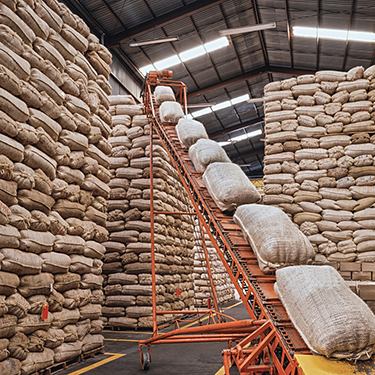Infrastructure investment due diligence

On behalf of a Canadian oilseed processer WPI's team provided market analysis, econometric modeling and financial due diligence in support of a $24 million-dollar investment in a Ukrainian crush plant. Consistent with WPI's findings, local production to supply the plant and the facility's output have expanded exponentially since the investment. WPI has conducted parallel work on behalf of U.S., South American and European clients, both private and public, in the agri-food space.

 The headline for the CBOT on Thursday was the unexpected surge in soymeal export sales that boosted that market and new crop soybeans to strong gains for the day. Soymeal exports have been a prominent support for the market this year and their recent uptick after December futures fell to near $...
The headline for the CBOT on Thursday was the unexpected surge in soymeal export sales that boosted that market and new crop soybeans to strong gains for the day. Soymeal exports have been a prominent support for the market this year and their recent uptick after December futures fell to near $...
 The CBOT was mostly higher for the day with the strength originating from the soybean market and spilling over into corn and soybeans. The soybean market derived its strength from new forecasts of hot, dry weather for the U.S. Midwest as the soybean crop approaches pollination and pod filling...
The CBOT was mostly higher for the day with the strength originating from the soybean market and spilling over into corn and soybeans. The soybean market derived its strength from new forecasts of hot, dry weather for the U.S. Midwest as the soybean crop approaches pollination and pod filling...
 Recently, a WPI client asked if we could summarize the major factors that have driven commodity markets over the past several months. The goal is to succinctly describe how markets have ended up in their current state and examine the next major trend(s) that are likely to develop. This report,...
Recently, a WPI client asked if we could summarize the major factors that have driven commodity markets over the past several months. The goal is to succinctly describe how markets have ended up in their current state and examine the next major trend(s) that are likely to develop. This report,...
 Tuesday’s CBOT trade featured gains in corn and the soy complex with funds casually covering some of their massive short positions amid oversold technical conditions and following Monday’s damage-inducing storms across the Midwest. Conviction was lacking, however, and the day’...
Tuesday’s CBOT trade featured gains in corn and the soy complex with funds casually covering some of their massive short positions amid oversold technical conditions and following Monday’s damage-inducing storms across the Midwest. Conviction was lacking, however, and the day’...